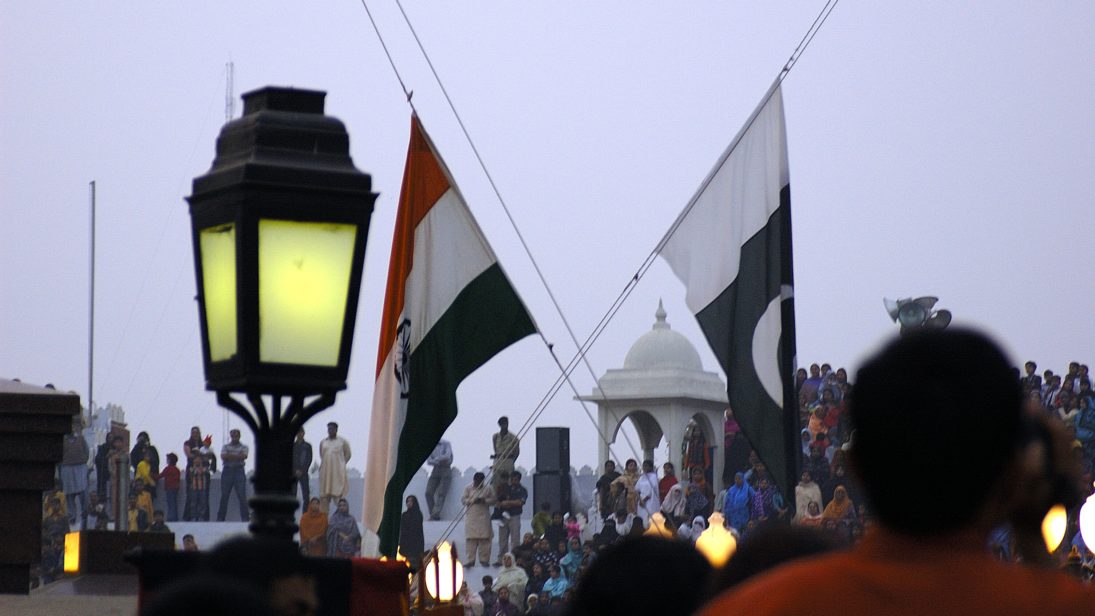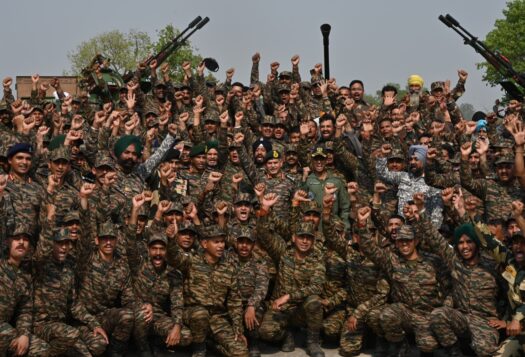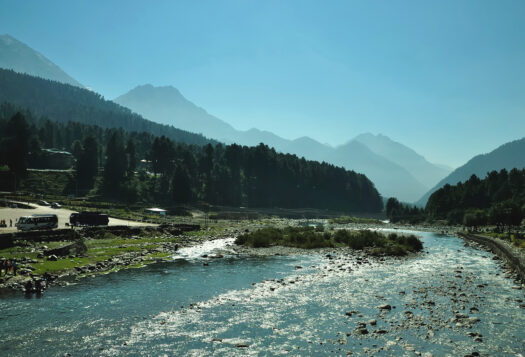
Since the outbreak of COVID-19, analysts have been discussing the virus’ far reaching impact on global healthcare systems, socioeconomic well-being, and existing national security priorities throughout the world. Even prior to the COVID-19 outbreak reminding the world of how quickly a virus can spread beyond borders, viruses, not war, were anticipated by some to be what would kill millions in the coming years. Hence, the post-COIVD-19 world might compel national leaders to reassess priorities between the traditional and non-traditional security paradigms. Calls to make livelihoods a top security imperative, as much as traditional security, could force nations to reallocate their defense budgets in the coming fiscal years in order to revive sinking economies and support research and development (R&D) in science and medicine.
By and large, COVID-19 has forced all states to revisit the conventional understanding of national security. This includes India and Pakistan, both of which are considered highly vulnerable to a virus due to their population density and inadequate resources to handle pandemics. In the wake of this pandemic, Indian and Pakistani GDP growth rates have contracted and has lowered the level of anticipated growth in defense spending of both countries for the coming years. For the first time a non-traditional (public health) security threat—COVID-19—was discussed at the National Security Committee in Pakistan. In this context, it is important to assess the consequences of the COVID-19 pandemic on India and Pakistan’s geostrategic calculus’, especially with regard to the “guns versus butter” debate. Despite the attention that the COVID-19 pandemic has drawn to development and healthcare gaps in South Asia, pervasive traditional security concerns have shown no signs of slowing in the wake of the pandemic, making it unlikely that COVID-19 will change India and Pakistan’s security priorities in the long-term.
The Guns vs. Butter Debate and Nuclear South Asia
The persistent need to invest in conventional weapons and their modernization and the evolving threat perception has produced an environment that hinders conflict management which could be used to lead to socioeconomic progress.
Theoretically, the sense of security bestowed by nuclear weapons should help states forego arms racing to match their adversaries’ military acquisitions and rather spend more on human development. However, the overt nuclear weapons status of India and Pakistan for the last 22 years has not seemed to shift for the guns-butter trade off towards domestic spending due mainly to two broad reasons.
First, over the past two decades, India and Pakistan have been commemorating their respective nuclear tests each May as a historic milestone towards invincible defense and regional stability. Despite the competing theoretical accounts on the regional implications of nuclear proliferation, the presence of nuclear deterrence in South Asia is broadly viewed as an insurance to ward off full-scale conventional war and prevent conflict escalation between two nuclear armed rivals. Thus, traditional security concerns have dominated South Asia’s security paradigm despite realizing the need for economic and social uplift.
Second, notwithstanding overt nuclearization, India and Pakistan are unlikely to let their feet off the conventional-military pedal due to the looming fear of threats that cannot be handled with nuclear weapons—the Pulwama-Balakot crisis last year only served to further entrench this reasoning. The persistent need to invest in conventional weapons and their modernization and the evolving threat perception has produced an environment that hinders conflict management which could be used to lead to socioeconomic progress.

COVID-19: Statistical Perspective of Traditional and Non-Traditional Security
According to the latest Human Development Index (HDI), India constitutes 28 percent of the world’s poor. However, India spends just 1.29 percent of its GDP on healthcare and has ranked 184 out of 191 by the World Health Organization in terms of the percentage of GDP spent on healthcare. Additionally, India’s healthcare allocation for this year lags behind experts’ expectations. Pakistan meanwhile, despite increasing its healthcare expenditures to 3.29 percent in the last fiscal year, currently spends only 1.1 percent of its GDP on healthcare, which is well below the World Health Organization’s recommendation of 6 percent. Pakistan has also ranked 152 out of 189 in the 2019 United Nations Human Development Report. To date India is the third worst-hit country by COVID-19 and Pakistan is the twelfth worldwide. Overall, the situation in South Asia does not aspire confidence in the existing state of healthcare systems to meet an emergency such as the ongoing pandemic.
Although COVID-19 seems to offer an opportunity to mobilize resources for health care—as desired by the premiers of India and Pakistan—the defense spending in India and Pakistan has grown significantly in the last 22 years, and it is unlikely that the current pandemic will shift each country away from these priorities. India and Pakistan have invested heavily in offsetting each other’s nuclear and conventional capabilities. As a result of their evolving strategic competition and deterrence requirements both nations are now in the formative phase of developing their respective nuclear triads. India’s military spending grew by 259 percent over the last three decades. Pakistan’s current defense spending, although much lower—USD $10.3 billion in comparison to India’s USD $71.1 billion for 2019—has continued to register a steady increase. Pakistan ranks 24th in military spending globally, while India is the third largest military spender in the world. The consistent increase in defense budgets of both countries suggest that each have prioritized traditional over non-traditional security in the past and this trend is unlikely to change in view of the evolving threat perceptions in the region.
COVID-19 and Evolving Security Dynamics in South Asia
Although the COVID-19 inflicted economic recession will impact defense budgets and military spending in the short to medium term, it is expected that the geostrategic landscape in South Asia after the COVID-19 pandemic will continue to witness renewed regional competition and a sustained arms race for the foreseeable future.
The magnitude and scale of the coronavirus pandemic has already produced weapons of mass disruption style effects as it has forced billions of people to take precautionary refuge in their homes, infected millions, and triggered the worst global economic recession in a century. However, in South Asia, the trend lines in the security environment and guns versus butter debate are unlikely to undergo a fundamental shift for a number of reasons. First, despite the ongoing global struggle to combat the spread of COVID-19, the routine skirmishes across the Line of Control between India and Pakistan continues unabated, indicative of no shift in the threat level between two neighboring adversaries.
Second, although India is dealing with rising cases of COVID-19, the country is unlikely to accept major defense cuts as it will not undermine its ongoing military modernization given its recurrent border tensions with almost all its neighbors that fuels its strategic threat perception. In addition to persistent tensions with Pakistan, India has recently had territorial flare ups with Nepal and an ongoing border spat with China which has been reported as the biggest face-off between the two nations since 1967. India continues to link its strategic competition with Pakistan and China as a driver for its increasing defense spending on conventional military modernization and buildup of strategic forces. Prior to the China-India standoff along the Line of Actual Control in Ladakh. India was expected to restructure its defense spending in the wake of the economic impact of COVID-19 by reducing reliance on foreign imports and increasing the indigenization for the defense sector. However, notwithstanding the COVID-19 outbreak and budgetary confines, India is now aiming to expedite its supply of defense equipment to augment its air, ground, and naval capabilities in the backdrop of escalating tensions with China.
Pakistan meanwhile is also investing in high-end military technologies to credibly deter India’s military buildup. Pakistan has recently signaled its resolve to resist India’s annexation of Jammu and Kashmir and its attempt to alter the status quo with all means at Pakistan’s disposal. Although Pakistan increased its defense spending by 11.8 percent in the most recent budget, the increase was marginal to account for currency devaluation, with the Pakistani military sacrificing a routine increase in its defense expenditure in the previous fiscal year in view of the economic crunch.
Subsequently, both India and Pakistan appear to be determined to address their traditional security dilemmas amid the economic recession and healthcare emergency triggered by the COVID-19 pandemic. India’s great power ambitions, the ongoing India-China standoff in Ladakh, and its designation as a net security provider, particularly as part of the Quadrilateral Security Dialogue (the Quad) against China, will ensure India doesn’t reduce the resources allocated towards its modernization and expansion of its conventional and nuclear military capabilities. This will in turn force Pakistan to maintain a minimum level of military spending required to maintain a credible deterrent posture against an India where political and military leaders have openly threatened to invade Pakistan-Administered Kashmir and Gilgit-Baltistan. Therefore, although the COVID-19 inflicted economic recession will impact defense budgets and military spending in the short- to medium-term, it is expected that the geostrategic landscape in South Asia after the COVID-19 pandemic will continue to witness renewed regional competition and a sustained arms race for the foreseeable future.
***
Image 1: Giridhar Appaji Nag via Flickr
Image 2: Gwydion M. Williams via Flickr


